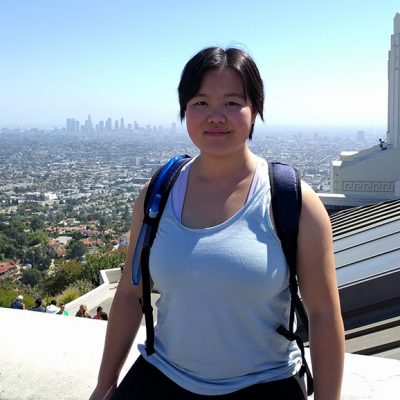Traversing a Path from Design Thinking to Teach for America
 During her time as an undergraduate, Jia Lin, ’17, was something of a force of nature. As a student leader, she variously served as ASWU president, residential advisor, tutor, academic peer mentor and active member of AIAS, Greek Council and Phi Sigma Sigma.
During her time as an undergraduate, Jia Lin, ’17, was something of a force of nature. As a student leader, she variously served as ASWU president, residential advisor, tutor, academic peer mentor and active member of AIAS, Greek Council and Phi Sigma Sigma.
“Because I was so invested outside the classroom, I knew I wanted to go into service [after graduation],” she says. As it turned out, she managed to find service opportunities even before leaving Burbank. Through the School of Architecture, she worked on a project during senior year, collaborating with the AIA-Pasadena/Foothill Chapter on redesigning the San Gabriel Valley Humane Society. That followed an earlier initiative, a pop-up project installation in Pico-Union, in the summer of 2015. “These projects really made me understand what it means to be an architect — to design for a better future,” she recalls.
But perhaps taking a page from the late Architecture Dean Norman Millar – who advocated passionately on behalf of architecture study even for those who opt not to practice – Jia looked beyond her chosen discipline. “I didn’t study architecture to become an architect,” she says. “I selected a design field because I wanted to learn design thinking and critical thinking.” While rote memorization had carried her through high school, she says, architecture offered substantially more: “Architecture taught me how to think better, that we can have better solutions, and that multiple solutions are correct.”
The undergraduate service experiences had whetted her appetite. “I had really wanted to volunteer with the Peace Corps, but couldn’t find myself going abroad when we have so many problems of our own here at home,” she says. “That’s why I started to look into service programs within the U.S. and was lucky enough to stumble on to Teach for America. I wanted to become an educator because kids should be able to express their creativity, and not be forced to spit out information like robots.” TFA, in the organization’s words, “mobilizes the nation’s most promising future leaders to grow and strengthen the movement for education equity and excellence.” TFA places corps members at Title 1 schools, where at least 40 percent of students come from low-income families, to help bridge the opportunity gap.
Jia completed Teach for America’s Institute, which serves as a kind of basic training for recent college grads. Job #1 involved teaching Algebra 1b to incoming tenth-graders in Atlanta – students attending summer school because they had failed either the regular class or the standardized test at year’s end. “This was my first time teaching an actual class that required lesson planning and great classroom management skills,” she recalls.
She quickly learned about “micro-teaching,” a TFA technique that enables novice instructors to rehearse and gain a measure of comfort in the classroom: “When the students’ school day is over, we go to training sessions to learn how to lesson plan, how to teach, and most importantly, how to incorporate culturally relevant pedagogy — diversity, equity and inclusiveness training — into our curriculum.”
While her students were studying math, she was getting schooled in the culture of the Southeast. “Coming from L.A., where we are so integrated, the South is still pretty segregated,” she says, noting that the school where she worked was 98 percent African-American. My fellow Corps members asked me how I felt about overcoming the struggle of being an Asian female teacher. I honestly had never thought of it that way — I had a lot of Asian female teachers as role models growing up, although apparently it’s rare to have Asian female teachers in the South.”
For Jia’s next assignment, she’ll be teaching math (again) but at a middle school in Charlotte, North Carolina. “I chose Charlotte because it has a low-cost of living and a pretty decent starting salary for teachers, but also because it’s the city with the lowest economic mobility rate among the 50 largest cities in the U.S.,” she explains. “I know I want to be in the classroom teaching for at least the next three to four years.” And after that? “I might get into public policy — and fight for affordable housing.”